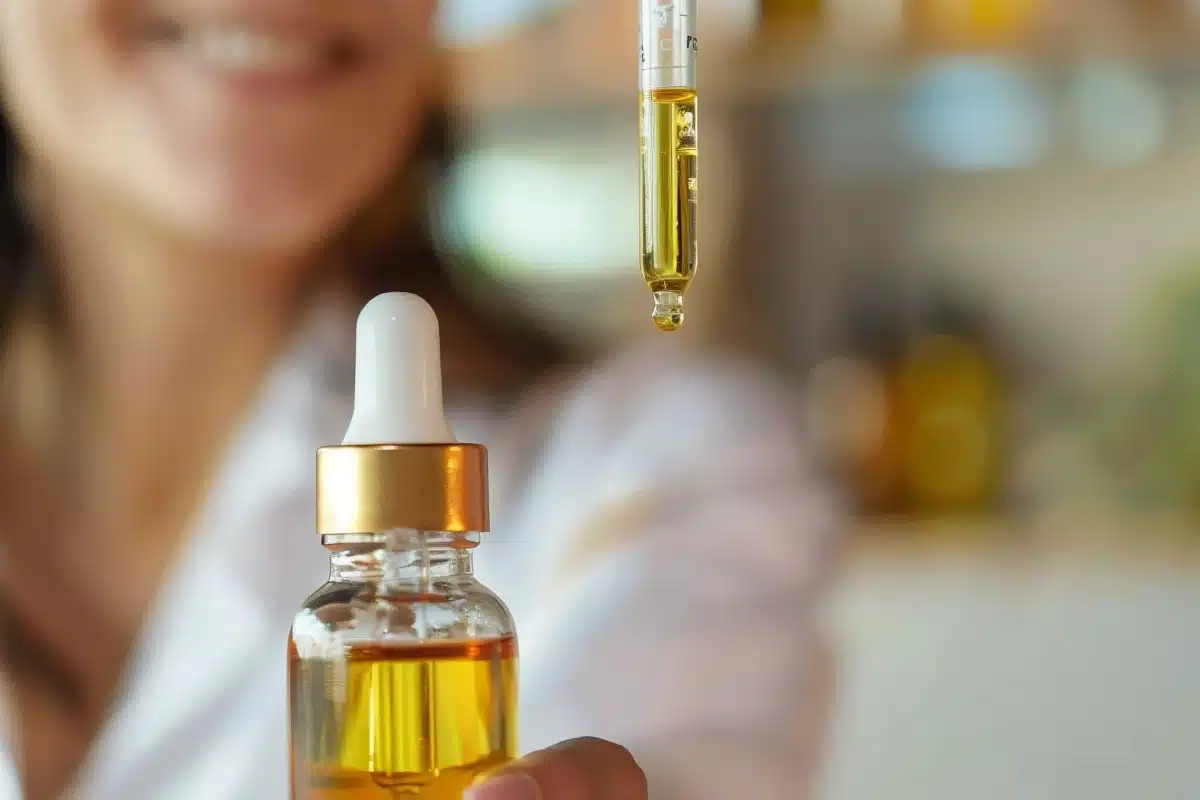The world of exfoliation is experiencing a revolution with the emergence of “oil gritting”, also known as “skin gritting”. In French, it is referred to as “grattage à l’huile”.
This technique involves using an oil-based cleanser to remove makeup and rid the skin of impurities, while visibly reducing enlarged and clogged pores, particularly on the nose, chin, and forehead.
Jodi LoGerfo, a skincare specialist, describes the process as a deep cleansing that involves massaging oil into the skin for several minutes once a week.
According to claims, this method helps to expel sebum from the pores.
Currently, this phenomenon is highly popular on social media, although there is no scientific evidence to support these claims.
Advocates of this method affirm that it helps to eliminate small black particles often visible in the pores without resorting to pressure or squeezing.
Users on TikTok share their experiences and attest to its effectiveness.
But is the efficacy of this practice real?
Before abandoning Biore pore strips, let’s examine the credibility of this viral method in the battle against stubborn blackheads.
How “Oil Gritting” Works

Oils are lipophilic, meaning they penetrate deep into the skin and form a protective barrier.
The theory behind “oil gritting” suggests that they can dissolve and dislodge debris, sebum, and dead cells stuck in the pores.
These impurities, especially sebaceous filaments often mistaken for blackheads, are purportedly eliminated by massaging oil onto the skin.
However, this method may not be as effective as claimed.
Jordan Harper, NP, CEO and founder of the beauty brand Barefaced, explains: “What we see on the skin after ‘oil gritting’ is dead cells removed by massage, not sebaceous filaments extracted from the pores.”
Therefore, even if the results do not exactly match what one hopes to remove from the pores, the skin still benefits from exfoliation.
Which Oil to Use for “Oil Gritting”?
Not all oils are suitable for skincare.
Common cooking oils such as olive or vegetable oil can actually clog pores and cause blemishes.
According to dermatologists, it is best to opt for an oil-based cleanser specially designed for the face, such as CeraVe’s Foaming Oil Cleanser or Burt’s Bees Facial Cleansing Oil.
Among the highly recommended products is La Roche-Posay’s Lipikar AP+ Cleansing Oil.
Some oils are praised for their skin benefits:
- Mineral oil
- Jojoba oil
- Grapeseed oil
- Hemp seed oil
- Safflower oil
- Sunflower oil
- Rosehip oil
Rich in antioxidants and linoleic acid, these oils moisturize, plump, and protect the skin barrier against pollution and UV rays.
It is essential to remember that some oils are comedogenic, or a too vigorous massage can worsen skin issues like psoriasis, eczema, rosacea, or acne.
Before applying a new oil to the face, it is wise to check the label to ensure you are not allergic to any of its components.
Steps to Perform “Oil Gritting”
Select a suitable non-comedogenic oil cleanser for your skin type.
Begin by heating a small amount of cleansing oil between your hands and gently massage your dry skin in circular motions, focusing on problem areas.
Massage the oil on your face for about 10 minutes to dissolve makeup and impurities, dislodging debris from the pores.
If your skin is sensitive, limit the massage to 2 or 3 minutes.
After the massage, let the oil sit for a few minutes to penetrate the pores and help release debris.
Massage your skin again, and you may feel small granular particles escaping from your pores.
Rinse thoroughly with warm water using gentle circular motions to remove any trace of oil and debris.
You can apply a water-based cleanser to remove any remaining residue.
Some choose to use toning pads containing alpha and beta hydroxy acids, such as Barefaced’s Toning Pads, to further purify the pores.
Finish with your usual skincare routine, including serum, moisturizer, and sunscreen.
Repeat this process weekly or as needed for your skin.
The Effectiveness of Oil Gritting
@preetyfaceco Tips get rid of sebaceous filament #oilgritting #sebaceousfilament #blackheads ♬ original sound – Pdfmap
The question arises: is it worth investing 15 minutes in this method?
According to Dr. LoGerfo, “oil gritting” could benefit the skin by removing dead cells.
This technique can also help cleanse makeup and dirt, which could improve the appearance of mature skin.
However, Dr. LoGerfo emphasizes that there is no documented evidence of the benefits of this method for the skin, and no scientific study has confirmed its effectiveness for a particular skin type.
She hypothesizes that “oil gritting” would probably be more advantageous for acne-prone and oily skin types as oil has the ability to attract oil.
Although there is no specific research supporting “oil gritting,” studies indicate that applying or massaging oils on the face can help reduce inflammation and repair the skin barrier.
Other Benefits of Facial Oils
Facial oils go beyond improving the appearance of pores. They also play a role in another trending skincare technique known as “oilplaning”.
Oilplaning is a form of at-home dermaplaning that offers deep exfoliation and removes fine hair and peach fuzz.
Unlike traditional dry shaving, oil is applied to the entire face beforehand.
Jordan Harper, a dermocosmetic expert, is a strong advocate of facial oils, especially for facial shaving.
“If you shave your face dry, stop immediately and opt for oilplaning,” she strongly advises.
Additionally, you can include an oil as the final step in your skincare routine to seal in moisture.
“For mature skin that produces less hyaluronic acid and is more prone to dryness, this is a particularly beneficial technique,” explains Harper.
Other Uses of Facial Oils
The benefits of facial oils extend beyond improving the appearance of pores.
They also prove to be valuable allies in other skincare techniques of interest.
One of them is oilplaning, a variation of dermaplaning that can be done at home for deep exfoliation.
This method differs from traditional techniques as it requires the application of oil on the face before shaving, effectively removing fine hairs and peach fuzz.
Jordan Harper, a dermocosmetic expert, highly recommends using facial oils for facial shaving.
She advises abandoning dry shaving in favor of oilplaning for optimal results.
It is also advisable to add an oil as the last step in your skincare routine to seal in moisture and provide extra protection.
This is particularly beneficial for mature skin, which produces less hyaluronic acid and is more prone to dryness, according to Harper.



